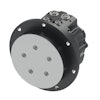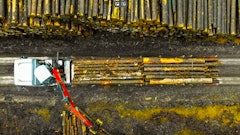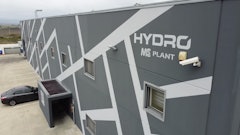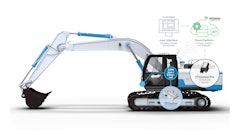Next year, 2007, will be a significant one for the former American Society of Agricultural Engineers. Known today as the American Society of Agricultural and Biological Engineers (ASABE), the St. Joseph, MI-based group will celebrate its 100th anniversary.
An educational and scientific organization for the advancement of engineering across the many fields of agriculture, ASABE and its members have practically been witness to the birth and certainly the evolution of the off-highway industry, as it relates to growing food, since 1907. Their work has ranged from hybrid seed technology that helps feed a nation to self-propelled crop sprayers that can practically think for themselves. ASABE's members, which today stands at 9,000 in more than 100 countries, have helped drive those changes.
Recently the ASABE announced a multi-media competition for high school students: "The ASABE100 Multi-Media Competition challenges students to consider what our lives would be like were we not to enjoy the advances made over the past century by agricultural and biological engineers, regarded by some as the single most important change-agent of the 20th century," says ASABE. "Such advances had obvious impact on farming as a livelihood, but they also caused numerous other shifts in the way society functions and in our quality of life."
High school students that turn their attention to the agricultural industry for this competition will find fertile ground from which to choose a focus. The difficult part, for me at least, would be narrowing it down to one subject, but I would have to focus on the machinery. Many of the advances here would surprise the average grocery-store shopper. A speaker at this year's SAE Commercial Vehicle Engineering Congress remarked that there is more technology involved in getting a large farm tractor across a field than when an airplane flies across the Atlantic.
ASABE's Historic Commemora-tion Committee could give students a basis from which to start. In cooperation with local sections, ASABE has been selecting and recognizing historic developments in agricultural engineering in the United States since 1926, when Ives Hall on the Ohio State University campus was recognized. Other things that have been recognized range from pole buildings to balers to rubber tires to the Nebraska Tractor Test Lab.
The people who have helped build the industry get recognized by ASABE, too, with the Cyrus Hall McCormick-Jerome Increase Case Gold Medal Award, first presented in 1932 "to recognize exceptional and meritorious engineering achievement in agriculture."
Dent Parrett, a tractor designer and manufacturer who built the machine seen here, was given the award in 1958. Offered in the mid-'30s, Parrett tractors were among the first to be designed and sold with pneumatic tires.
The competition is open to any high school student and comprises three elements: an essay and two visual aids. From state winners, three finalists will be selected to present their work at the 2007 Annual Int'l. Meeting, June 17-20, in Minneapolis. Preregistration is due by Dec. 15. Top prize is a check for $5,000.








![Hcm Ax Landcros Press Release[32] jpg](https://img.oemoffhighway.com/mindful/acbm/workspaces/default/uploads/2025/11/hcmaxlandcros-press-release32jpg.mAEgsolr89.jpg?ar=16%3A9&auto=format%2Ccompress&fit=crop&h=135&q=70&w=240)






